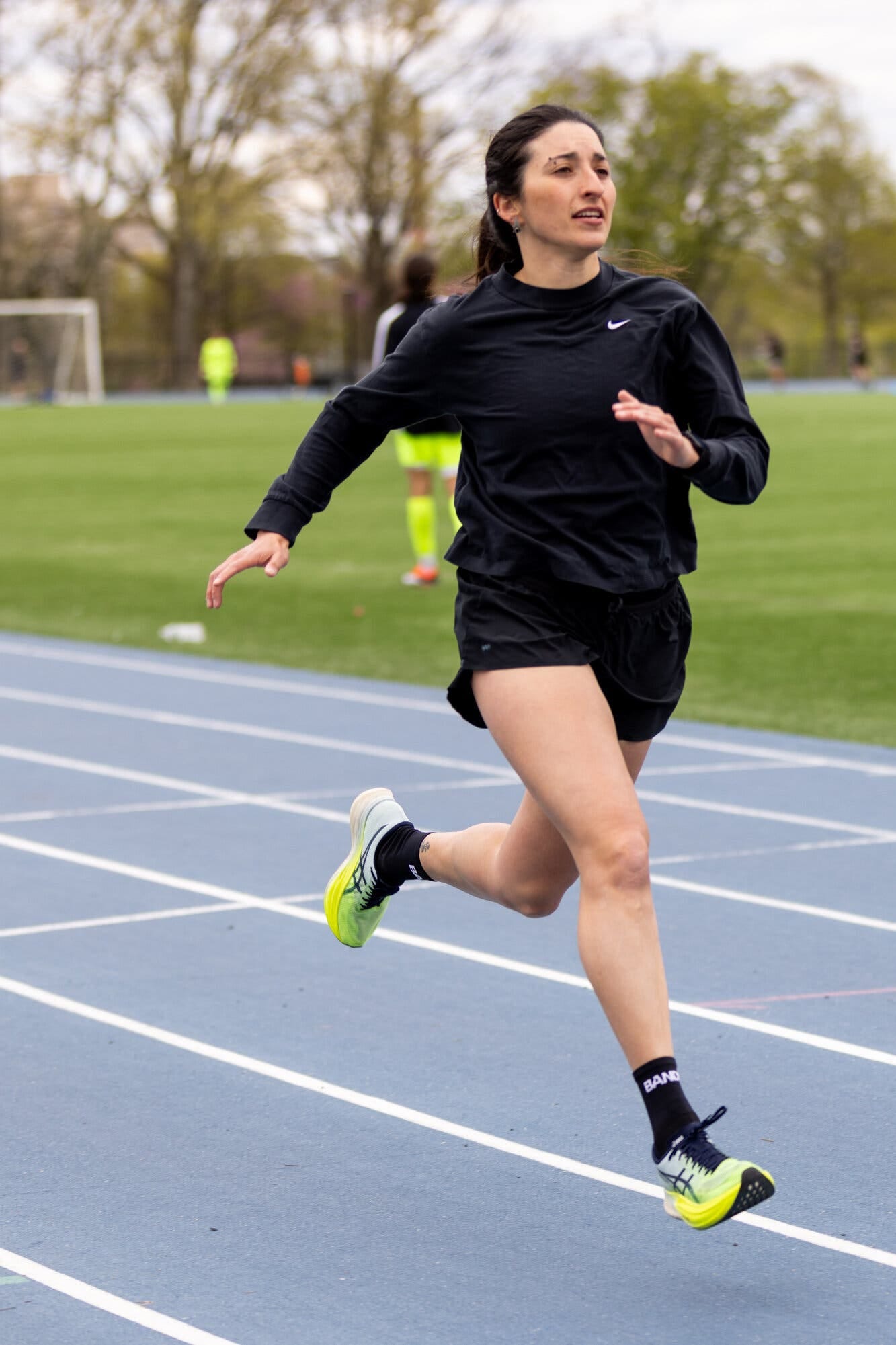Heya and welcome back to Five Things Running!
It’s the end of October and it is raining. Don’t get me wrong, I love running in the rain. It can be so refreshing, if you have the proper attire. On Wednesday I went on a pre-conference group run in Heilbronn and of course I forgot my rain jacket. I was soaking wet, but had great early-morning conversations.
On Saturday I did a very liberating run: I dropped off my wife and kids at IKEA and went running instead. When I came back after 19 km, they still weren’t done shopping, so next time I’ll run even longer…
Remember to get your Waldlauf apparel - it’s ideal for fall days, especially when you’re not running in the rain!
Here’s this week’s Five Things Running!
The running industrial complex
In the sport’s new golden age, more people are running than ever, and more records are falling faster than ever. Advances in technologies like carbon-plated shoes have allowed marathoners to reach times that would once have felt superhuman. But as elite runners are reaching new heights, many average runners like me are being bombarded with endless social media promotions for untested and pseudoscientific running gear purporting to help us become more like the elite. Some of these products can be helpful, many are a waste of money, and a few might even put runners at risk, all to fuel more than $4 billion a year in US spending.
I think it is about time to remember that running should be a really simple sport.
5 Tricks to Make Your Run Faster, Healthier and More Fun
If you’ve managed to get up on a cold morning, put your running clothes on and get out the door, you’ve already succeeded. The last thing you probably want to do is sprint until your lungs burn.
But you don’t have to overdo it to add a little intensity. Just running some intervals at slightly faster paces — also known as speed work — can offer significant health benefits, help you run faster and simply add some variety to a jog.
I need to do strides again.
He Tells His Followers to Run Like a Dead Octopus. It’s Oddly Genius.
Another reason for so much suspect running advice is the Dunning-Kruger effect, says Zillén, who I interviewed last fall while in Stockholm and who has taught running technique full-time since 2010. The Dunning-Kruger effect proposes that less competent people overestimate their abilities—and the more ignorant they are about a subject, the more confident they are. This describes many running influencers, says Zillén: They’ve run sub-three-hour marathons. They’ve read Born to Run. And so they’re bold about opining about running form. (“180 steps per minute is the best cadence!”) But being a good runner isn’t the same thing as understanding proper running biomechanics, he says, much less articulating them clearly.
Oh, don’t get me started on all these semi-talented people who try to be running experts.
Could Nike’s New “Powered” Shoe Do For Running What E-Bikes Did For Cycling?
It’s a mechanical shoe system designed to give everyday runners and walkers an actual assist with each step, powered by a lightweight motor, a drive belt, and a rechargeable battery in a cuff that connects to the shoe.
And while that might sound like something ripped from a sci-fi fitness pitch, Nike insists the experience is smooth, intuitive, and even fun.
This is just absurd.
The Endurance Artist
At the age of twenty-four, Cantrell organized his first race: an offroad marathon held on a virtually unnavigable course in the wilds of south-central Tennessee that turned out to be a mile longer than advertised. Sound familiar? When the few finishers (who’d paid twenty-five cents a head to enter the event) complained about it afterward, Cantrell shot back, “If you want to run for time, run on a track.” At a time when American distance running was rapidly becoming standardized and homogenized, this longhaired greenhorn with a lopsided face wanted to go in the other direction, imagining a scarier, funnier version of the sport.
A success-seeking event organizer would have surrendered to his customers’ negative feedback and pivoted toward making people-pleasing, cookie-cutter races (“flat and fast!”). But value-driven Gary Cantrell did the opposite, spinning out his vision in various ways until one of them took (the Strolling Jim 40), then another (the Barkley). When an artist is thoroughly uninterested in getting rich and famous, it often takes them a while to find their audience.
Lazarus Lake is really an interesting person.
Thanks to COROS for supporting this publication!
If you missed last week’s edition, you can read it here:
Now, go running!
— Nico
🏃🏻♂️








